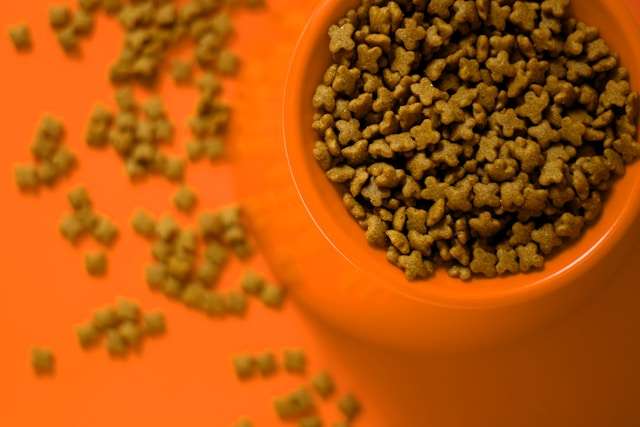Top Dog Foods in 2024: How to Choose the Best One for Your Pup

Choosing the right dog food isn’t just about taste—it’s key to keeping your pup happy and healthy. Every dog has unique nutritional needs, from puppies to seniors or breeds with specific requirements. Understanding what goes into their bowl can impact their energy, digestion, and overall wellness. For instance, if you’re considering food tailored for older dogs, this guide on Purina Pro Plan Dog Food for Seniors can be a helpful resource.
With so many options on the market, finding the right one might feel overwhelming, but breaking it down by quality, ingredients, and your pup’s needs makes it easier. Stay tuned to learn how to make the wisest choice for your furry friend.
Table of Contents
Understanding Dog Nutrition
Proper dog nutrition is the foundation of a happy and healthy canine life. To make informed decisions about your dog’s diet, it’s crucial to understand the main components of their nutritional needs. Here’s a breakdown of what every dog owner should know.

Photo by MART PRODUCTION
Macronutrients: Proteins, Fats, and Carbohydrates
Dogs, just like humans, need a balance of macronutrients to thrive. Here’s what each does for your pup:
- Proteins are the building blocks for your dog’s muscles, skin, and hair. They’re also vital for creating enzymes and hormones. High-quality sources include meat (chicken, beef, lamb), fish, and eggs. Growing puppies and active dogs need more protein to maintain their energy and development. Proteins should make up a substantial part of their diet, but avoiding fillers or by-products is crucial.
- Fats: Healthy fats provide energy and support vital functions like cell structure and vitamin absorption. Omega-3 and Omega-6 fatty acids are fantastic for maintaining a shiny coat and reducing inflammation. Familiar sources include fish oil, chicken fat, and flaxseed oil. But remember, too much fat can lead to obesity, so portion control is key.
- Carbohydrates: Carbohydrates aren’t as essential as proteins or fats, but they provide a quick energy source. They should come from whole grains, vegetables, or fruits. Avoid cheap fillers like corn or wheat that don’t offer much nutritional benefit.
For additional insights into the best dog food options for specific needs, check out this guide on best dog food for health issues.
Vitamins and Minerals
Vitamins and minerals are as crucial to dogs as they are to humans. Here’s why:
- Vitamins: Essential vitamins like A, D, E, and K help with vision, bone health, immune support, and blood clotting. B vitamins, on the other hand, are vital for energy metabolism. These nutrients are typically found in fruits, vegetables, and meat.
- Minerals: Calcium and phosphorus are critical for strong bones and teeth. Iron supports oxygen transport in the blood, while zinc is necessary for a healthy coat and skin. Trace minerals like selenium and magnesium also play vital roles in overall health.
It’s essential to choose dog food that includes these nutrients in their natural balance. You can explore in-depth dog nutrition information in resources like Dog Nutrition Basics.
Reading Dog Food Labels
Decoding dog food labels can feel like reading a new language. But don’t worry—it’s simpler than it seems. Here’s what to look for:
- Ingredients List: Ingredients are listed by weight, so the first few items are the most important. Look for high-quality proteins as the primary ingredient.
- Guaranteed Analysis: This gives the percentage of protein, fat, fiber, and moisture. Ensure it meets your dog’s specific needs.
- Nutritional Adequacy Statement: This tells you if the food is “complete and balanced” for your dog’s life stage (puppy, adult, senior).
- Additives: Steer clear of artificial preservatives, colors, or flavors. Opt for natural or minimally processed options.
Being informed helps you avoid low-quality products. For tips on selecting the best nutrition approach, visit the nutrition tips guide.
By understanding these key aspects of dog nutrition, you’re already a step closer to making better choices for your furry friend. Whether selecting a specific formula or evaluating a food label, this knowledge empowers you to prioritize your dog’s health effectively.
Types of Dog Foods
When choosing dog food, it can feel like navigating an endless aisle of options. From convenience to nutritional value, each type has its perks and pitfalls. Let’s break this down to help you make the best pick for your furry friend.
Dry Dog Food (Kibble): Pros and cons of dry dog food and its convenience

Photo by MART PRODUCTION
Dry dog food, or kibble, is one of the most common options for dog owners, and it’s easy to see why. It’s convenient, cost-effective, and has a long shelf life. You’ll appreciate how easy it is to measure portions, which helps with weight management.
Advantages:
- Affordable and widely available.
- Promotes dental health by reducing tartar build-up.
- Easy to store and serve.
Disadvantages:
- Lower water content can be an issue for dogs needing hydration.
- It often contains fillers like corn or wheat.
Are you looking for more insight on kibble options? Check out the best dog food guide for options tailored to your dog’s needs.
Wet Dog Food: Advantages of wet dog food and when it might be preferable
Wet or canned dog food is popular for picky eaters or dogs with dental issues. It has a higher moisture content, which is fantastic for hydration. However, it does come with a higher price tag and a shorter shelf life once opened.
Why Choose Wet Food?
- It is palatable and easy to chew for older dogs or those with dental concerns.
- The high water content helps with hydration.
- Often contains fewer preservatives compared to dry food.
For more details on different types of food, explore this Nylabone guide.
Raw Dog Food Diet: Explain the raw food diet and its benefits and risks
The raw food diet has gained traction among pet owners aiming for a more natural approach. This diet typically includes raw meat, bones, fruits, and vegetables. Proponents believe it’s closer to what dogs would eat in the wild.
Benefits:
- Improved coat sheen and healthier skin.
- Smaller, less smelly stools.
- High protein and unprocessed ingredients.
Risks:
- Potential bacterial contamination from raw meat (e.g., salmonella).
- Balanced meals can be challenging to prepare.
- Expensive compared to other options.
Consulting your vet is vital before switching to raw food. Want a breakdown of raw food benefits and drawbacks? This Halo House guide is a great resource.
Homemade Dog Food: How to prepare balanced homemade dog food
Homemade dog food gives you full control over your pet’s diet. You’ll know exactly what’s going into the bowl—perfect for pups with specific sensitivities or allergies.
Preparation Tips:
- Always include a protein source (chicken, beef, fish).
- Add carbs like rice or sweet potatoes for energy.
- Include vegetables such as carrots or spinach for vitamins.
Things to Watch Out For:
- Avoid toxic foods like onions, garlic, or chocolate.
- Consult with a vet or pet nutritionist to ensure meals are balanced.
- It requires time and effort and is perfect for dedicated pet parents.
Specialty Diets (Grain-Free, Limited Ingredient, etc.): Explore various specialty diets for specific health needs
Specialty diets cater to dogs with unique health concerns or dietary preferences. Grain-free diets, for example, are ideal for dogs with grain allergies. Limited-ingredient foods, on the other hand, reduce the chance of triggering sensitivities.
Types of Specialty Diets:
- Grain-Free: Great for sensitive stomachs but not necessary for all dogs (read more here).
- Limited Ingredient: Simplifies the ingredient list for easier digestion.
- Prescription Diets: Specifically designed for medical issues like kidney disease or diabetes.
For a deep dive into specialty diets, check out Pet Foods – Diet Types. Each option addresses the individual health needs of dogs, helping them thrive.
By knowing the various types of dog foods and their perks, you’ll be better equipped to choose the proper meals for your canine companion.
Top Dog Food Brands
With so many dog food brands competing for attention, knowing what each has to offer is crucial. Here’s a look at top-tier options to help you pick the perfect food for your pup.
Orijen: High-Protein Formulations
Orijen’s philosophy is rooted in providing biologically appropriate food, mirroring what dogs eat in the wild. Their high-protein recipes are crafted with 85% animal ingredients, offering optimal nutrition for active and growing dogs.
Why Choose Orijen?
- High-quality meats like free-run chicken, turkey, and fish.
- Minimal carbohydrates to prevent weight gain.
- Freeze-dried coating for natural flavor enhancement.
For more details about Orijen’s commitment to quality and protein-packed options, check out Orijen Large Breed Puppy Food. You can also explore Orijen Dog Food Review for additional insights.
Blue Buffalo: Variety and Natural Ingredients

Photo by cottonbro studio
Blue Buffalo specializes in creating formulas to meet the unique needs of all dogs. Their recipes avoid artificial additives, ensuring a wholesome meal for your furry friend.
Key Features:
- Real meat as the first ingredient.
- Options for sensitive stomachs, seniors, and large breeds.
- Essential vitamins and minerals to support immunity and energy.
If you’re looking into specifics, the Blue Buffalo Life Protection Formula provides a well-rounded option for adult dogs. Dive deeper into reviews with resources like Blue Buffalo Dog Food Review.
Purina Pro Plan: Senior Dogs and Beyond
Purina Pro Plan is a science-backed brand focusing on targeted nutrition. For senior dogs, their formulas address cognitive health, joint mobility, and immunity.
Highlights of Purina Pro Plan:
- Fortified with Omega-3s and glucosamine for joint health.
- Probiotics for digestive wellness.
- Special blends for varying stages, including aging pets.
Explore the senior-specific formulas at Purina Pro Plan Dog Food for Seniors, or learn more about aging pet care at Pro Plan Senior Dog Food.
Canidae: All-Natural Ingredients and Holistic Approach
Canidae prides itself on using minimal, whole-food ingredients. Their “All Life Stages” formulas simplify feeding for multi-dog households.
What Makes Canidae Stand Out?
- No fillers like corn, wheat, or soy.
- Premium proteins like salmon, lamb, and chicken.
- Omega fatty acids for a healthy coat and skin.
For more details, check out Best Dog Food For Australian Shepherds, where Canidae is highlighted as a balanced option. Learn further with this Canidae All Life Stages Dog Food Guide.
Wellness CORE: Grain-Free, High-Protein Excellence
Wellness CORE focuses on grain-free recipes, making them excellent for dogs with allergies or sensitivities. Their protein-rich formulas cater to dogs needing energy-dense meals for an active lifestyle.
Key Benefits:
- High protein levels from turkey, chicken, and fish.
- No grains, artificial preservatives, or fillers.
- Nutrient-packed superfoods like spinach and kale.
Read more at 4 Best Wet Dog Foods or check the Wellness Core Dog Food Review for an in-depth review of grain-free options.
Each of these brands delivers outstanding nutritional benefits tailored to various canine needs. Selecting the right food involves understanding your dog’s specific requirements and preferences. Stay tuned for the next section, where we’ll explore additional tips for choosing the best food for your pup!
Evaluating Your Dog’s Needs
Understanding your dog’s unique requirements is the first step in selecting the best food. Each dog’s needs vary based on age, breed, health, and lifestyle. Let’s break this down so you can make an informed choice for your furry friend.
Age and Life Stage: Impact of age and life stage on dietary requirements
A dog’s age and life stage are essential factors in determining their dietary needs. Puppies, adults, and senior dogs require different food formulations to support their specific phases of growth and development.
- Puppies need calorie-dense diets rich in protein and healthy fats to fuel their rapid growth. DHA, an omega-3 fatty acid, is essential for brain and vision development.
- Adults: Adult dogs require a balanced diet to maintain their overall health. Their food should include moderate protein, healthy fats, and essential vitamins to sustain steady energy levels.
- Seniors: Senior dogs benefit from low-calorie diets to prevent obesity. Their food should include joint-supporting nutrients like glucosamine, chondroitin, and antioxidants to boost immunity.
Choosing a diet tailored to your dog’s life stage ensures they thrive at every age. For more on feeding senior dogs, check out our Purina Pro Plan Dog Food for Seniors guide.
Breed-Specific Nutritional Needs
Did you know that different breeds may have unique dietary requirements? This is mainly due to variations in size, activity levels, and predispositions to specific health conditions.
For instance:
- Large breeds (e.g., Labradors) benefit from food designed to support joint health and prevent overgrowth during the puppy stage.
- Small breeds (e.g., Chihuahuas): These dogs need nutrient-dense food in smaller portions due to their fast metabolism.
- Active breeds (e.g., Border Collies): High-energy breeds thrive on diets rich in protein and carbs to fuel their lifestyles.
For breed-specific recommendations, the Best Dog Food for American Bullies provides excellent insights into tailored nutrition for this muscular breed.
Health Issues and Dietary Considerations
If your dog has health issues, their diet is critical in managing their condition. From food allergies to chronic illnesses, the correct formulation can make all the difference.
- Food Allergies: Dogs with allergies benefit from limited-ingredient diets or hypoallergenic formulas that reduce exposure to potential triggers.
- Obesity: Weight management formulas with controlled calorie content can help.
- Joint Problems: Foods enriched with glucosamine and omega fatty acids support joint health.
- Sensitive Stomachs: Easily digestible foods with prebiotics and probiotics promote gut health.
For more guidance, explore our resource on Dog Food for Health Issues. Please consult your vet to ensure your dog’s dietary changes align with their medical needs.
Evaluating your dog’s age, breed, and health ensures you’re meeting their unique needs. Tailored nutrition leads to a happier, healthier pup!
Tips for Transitioning Dog Foods
Transitioning your dog’s food is more than swapping out one bag for another. Dogs, like humans, can experience digestive sensitivities when their diets change abruptly. This section explains how to make this process easy and stress-free for you and your furry companion.
Gradual Transition: Explain gradually transitioning to a new dog food.

Photo by Wendy Wei
Switching dog food should always be done gradually over 7-10 days. A sudden shift can lead to upset stomachs, diarrhea, or even refusing to eat. This gradual approach gives their digestive system enough time to adjust to the new formula.
Here’s a simple step-by-step guide:
- Day 1-3: Mix 25% of the new food with 75% old food.
- Day 4-6: Increase to 50% new and 50% old food.
- Day 7-9: Move to 75% new and 25% old food.
- Day 10: Transition to 100% new food.
Sticking to this timeline minimizes digestive upset and helps your dog adjust. You can explore more details on food transition strategies in this helpful guide from the AKC.
Monitoring Your Dog’s Response: Detailed instructions on what to watch for during the transition period.
During the transition, keep a close eye on your dog’s behavior, eating habits, and overall demeanor. Their body’s reaction will tell you whether or not the switch is going smoothly.
Here’s what to watch for:
- Appetite: Does your dog eat eagerly, or are they hesitant? Hesitation might indicate they don’t like the new food.
- Stool Consistency: Loose stools, diarrhea, or constipation are signs the new food may not be settling well.
- Energy Levels: Any noticeable change in energy could signal issues.
- Skin and Coat: Watch for itchiness or a dull coat, which may hint at food sensitivity.
If you notice any alarming changes, slow the transition process and consult your vet. For dogs with sensitive stomachs, consider options designed to ease digestive discomfort gently, such as those listed in the Best Dog Food for Sensitive Stomachs.
Smoothly transitioning your dog’s diet protects their tummy and sets the stage for a long-term love affair with their new food. Following these tips ensures the switch is a positive experience for both of you. For more advice on making a successful switch, check Purina’s Changing Dog Food Guide.
Frequently Asked Questions About Dog Food
When it comes to dog food, pet owners often ask lots of questions. From choosing the best brand to understanding labels, knowing the answers can help you make informed decisions. Below, we tackle some common questions to guide you.
What Are the Most Important Nutrients for My Dog?
Dogs need a balanced diet with the right mix of nutrients to thrive. Proteins are essential for building muscles and keeping your dog strong. Fats provide energy and support coat health, while carbohydrates offer a quick energy source. Don’t forget about vitamins and minerals—they’re crucial for everything from immune health to strong bones.
Want more details on what your dog needs? Check out the Dog Nutrition Basics for an in-depth breakdown.
How Do I Choose the Right Food for My Dog’s Size or Breed?
Different breeds and sizes have unique dietary needs. For example, small breeds often require calorie-dense food due to their fast metabolism, while large breeds may need glucosamine to support joint health. Puppies, adults, and senior dogs also require specific formulations for their life stages.
Explore the Dog Breed Guide: Find Your Perfect Companion for breed-specific insights for tailored recommendations.
Is Grain-Free Food Better for My Dog?
Grain-free diets have gained popularity but are not necessary for all dogs. While some dogs with grain allergies benefit from grain-free food, others thrive on a diet that includes whole grains like brown rice or oatmeal. Always consult your vet to determine if a grain-free option suits your dog.
For more on this hot topic, 4 Common Questions About Pet Food addresses common concerns about grains and other ingredients.
How Can I Read and Understand Dog Food Labels?
Dog food labels can be tricky to decode at first glance. Here’s what to focus on:
- Ingredients List: Ingredients are listed by weight, so the first few items matter most. Look for high-quality proteins.
- Guaranteed Analysis: Shows the percentage of protein, fat, fiber, and moisture—important for comparing different options.
- Nutritional Adequacy Statement: Indicates if the food is complete and balanced based on specific life stages.
Looking for a detailed guide? This WSAVA Myths & FAQs Document explains pet food labeling well.
Are There Any Foods I Should Never Feed My Dog?
Yes, certain foods can be harmful or poisonous to dogs. Here are a few to avoid:
- Chocolate
- Onions and garlic
- Grapes and raisins
- Alcohol and caffeine
- Fatty or fried scraps
If you’re curious about safe treatment options, the Ultimate Guide to Poodles highlights healthy alternatives for picky eaters.
What Is the Best Way to Transition My Dog to a New Food?
Switching your dog’s food requires gradually transitioning over 7-10 days to avoid upset stomachs. Start by mixing a small portion of the new food with their old food and gradually increasing the new to old ratio. For a step-by-step guide, visit Purina’s Changing Dog Food Page.
By answering these common questions, you’ll feel more confident feeding your furry companion the best possible diet. Stay tuned for more insights in the rest of the guide!
Conclusion
Choosing the best dog food for your pup is more than finding something they’ll eat—it’s about supporting their health, energy, and happiness. Every dog is unique, and their diet should reflect whether they need support for sensitive stomachs, high energy levels, or specific life stages.
Start by understanding their needs and using this knowledge to guide your choices. Explore options like those in our detailed guide on the best dog food for herding breeds to find tailored solutions. Always consult your vet for additional guidance.
By investing in the proper nutrition, you’re giving your dog the foundation for a healthy, fulfilling life. Your commitment matters—not just to their meals but to their overall well-being. What next step will you take to improve your dog’s diet?







2 Comments